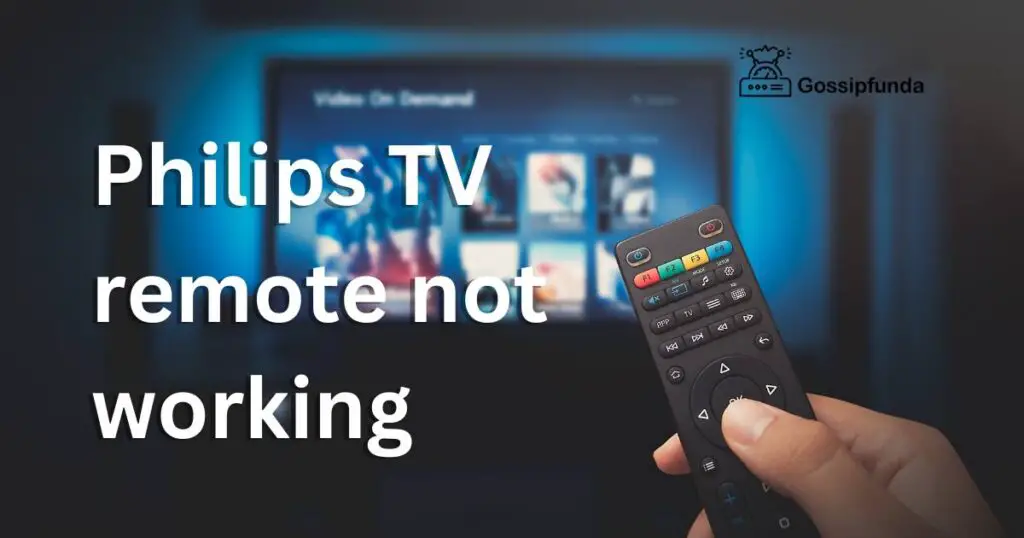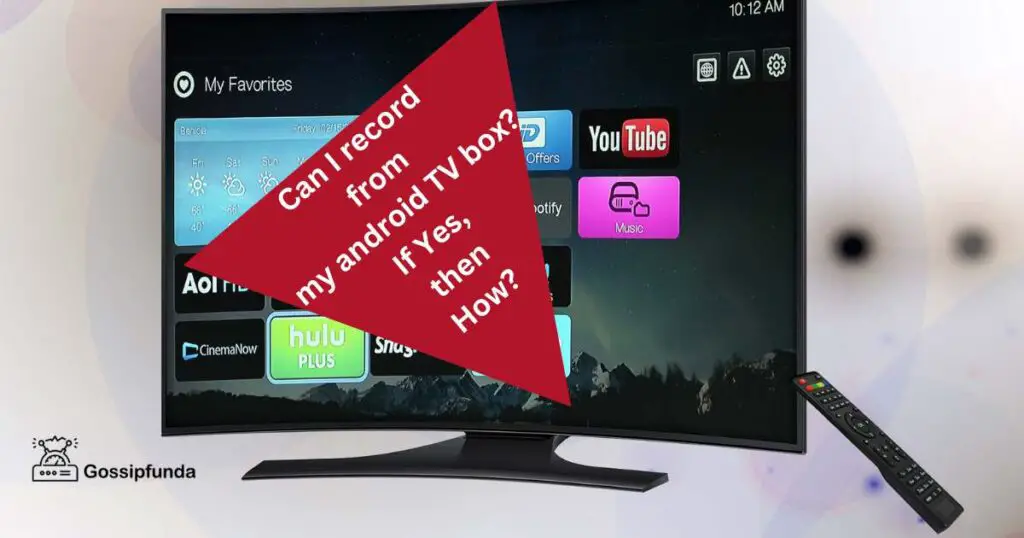Experiencing trouble with your Philips TV remote is a common household frustration. In today’s fast-paced world, a non-functional TV remote can disrupt our relaxation and entertainment time. This comprehensive guide is designed to help you swiftly diagnose and resolve any issues you might encounter with your Philips TV remote. Whether you’re facing unresponsiveness, inconsistent performance, or other glitches, we’ve got you covered. Read on to find out how you can get your remote back in action and return to enjoying your favorite TV shows and movies with minimal hassle.
Reasons behind Philips TV Remote not working
Certainly, here’s a focused list of reasons behind issues with Philips TV remotes:
- Battery Problems: The most common cause of remote control issues is related to batteries. This can include dead batteries, incorrectly inserted batteries, or using low-quality batteries that fail to provide sufficient power.
- Physical Damage: Physical impacts such as drops or spills can cause internal damage to the remote, affecting its functionality. This includes broken buttons, damaged circuits, or loose internal components.
- Signal Interference: Various factors can interfere with the signal between the remote and the TV. These include obstacles blocking the sensor, proximity to other electronic devices, or electromagnetic interference from devices like microwaves or wireless routers.
- Pairing Issues: Sometimes, the remote may lose its sync with the TV. This can happen after a power outage, a TV software update, or simply due to a glitch in the system.
- Software or Firmware Problems: In some cases, the issue might be due to outdated firmware or software in the TV itself, causing compatibility issues with the remote.
- Wear and Tear: Over time, remotes can suffer from general wear and tear. Regular use can lead to worn out buttons, which might not register presses effectively.
- Internal Component Failure: Internal failures, such as a broken circuit board or malfunctioning sensors within the remote, can lead to a complete breakdown in communication with the TV.
- Accumulated Dirt and Debris: Accumulation of dirt, dust, and debris inside the remote can hinder button functionality and block the signal emitted from the remote’s infrared sensor.

Don’t miss: Samsung tv not responding to remote or buttons
Understanding these reasons can be a crucial step in effectively troubleshooting and resolving issues with Philips TV remotes.
How to Fix Philips TV remote not working?
Fix 1: Resolving Battery Problems in Philips TV Remote
Battery issues are the most common cause of problems with Philips TV remotes. Addressing these effectively can often restore your remote to perfect working condition.
- Check Battery Placement: Start by ensuring that the batteries in your remote are inserted correctly. The positive (+) and negative (-) ends should match the indications in the battery compartment. Incorrect placement can prevent the remote from receiving power.
- Replace Batteries: If the batteries are correctly placed and your remote still isn’t working, they may be depleted. Replace them with new ones. It’s essential to use high-quality batteries for better performance. Cheaper batteries might not provide sufficient power, leading to inconsistent remote performance.
- Clean Battery Contacts: Over time, the battery contacts in the remote can become dirty or corroded, hindering the power flow. Gently clean the contacts with a dry cloth or a cotton swab. If there’s noticeable corrosion (often appearing as a white or greenish residue), lightly scrape it off with a small screwdriver or a brush. Be gentle to avoid damaging the contacts.
- Ensure Firm Contact: Sometimes, the batteries might not make firm contact with the terminals in the remote. This can be due to the springs or contacts being slightly bent or worn out. Gently bend the contacts back towards the batteries to ensure a snug fit. But be cautious, as excessive force can break them.
- Avoid Mixing Old and New Batteries: Never mix old and new batteries, as this can cause issues due to differences in the voltage and discharge rates. Always replace all batteries at the same time with new ones.
- Check for Battery Leakage: If you find any leakage from the batteries, it’s vital to clean the compartment thoroughly. Battery acid can cause severe damage. Use a cloth or a cotton swab dampened with vinegar or lemon juice to neutralize and wipe away any leakage. After cleaning, ensure the compartment is dry before inserting new batteries.
By following these steps, most battery-related issues with Philips TV remotes can be resolved, restoring the remote’s functionality and your access to uninterrupted entertainment. Remember, regular checks and maintenance of your remote’s batteries can prevent many common issues.
Fix 2: Addressing Physical Damage to Philips TV Remote
Physical damage to your Philips TV remote can manifest in various forms, from visible cracks to internal component disruptions. Tackling these issues can sometimes restore your remote’s functionality.
- Inspect for Visible Damage: Carefully examine your remote for any visible cracks, loose parts, or broken buttons. If the remote has suffered a fall or impact, internal components might be dislodged or damaged.
- Secure Loose Components: If you notice any loose components inside the remote (you might hear them when shaking the remote), you can try to open the remote to reposition them. However, this should be done with caution. Use a small screwdriver to gently pry open the case. Once opened, carefully reposition any loose parts or circuit boards and secure them. Be cautious, as improper handling can cause further damage.
- Clean Stuck Buttons: If buttons are stuck or unresponsive, they may be dirty or sticky. You can clean them by gently removing the top cover of the remote. Use a cotton swab dipped in isopropyl alcohol to clean around the buttons. Ensure the alcohol is not dripping wet to avoid internal damage. Let it dry completely before reassembling.
- Consider Professional Repair or Replacement: If the remote is severely damaged or you’re unable to fix the issue, it might be time to consider professional repair or replacing the remote. Sometimes, the cost of repair might not be justified compared to purchasing a new one.
Fix 3: Eliminating Signal Interference with Philips TV Remote
Signal interference can severely impact the performance of your Philips TV remote. This issue can be caused by various external factors.
- Remove Obstructions: Ensure that there are no objects blocking the line of sight between your remote and the TV’s IR sensor. Objects like books, decorations, or furniture can block the signal.
- Distance and Angle: The effectiveness of the IR signal depends on the distance and angle you are from the TV. Try using the remote closer to the TV and directly in front of it. If it works at a closer range, the issue might be the signal strength.
- Interference from Other Devices: Other electronic devices, especially those emitting wireless signals, can interfere with your remote. Try turning off or moving other electronic devices away from your TV and remote to see if this resolves the issue.
- Check for External Light Sources: Sometimes, strong light sources like direct sunlight or powerful lamps can interfere with the IR signal. Try using the remote away from strong light sources or in a dimmer environment.
By addressing physical damage and eliminating signal interference, you can greatly improve the chances of restoring your Philips TV remote to proper working order. These steps, combined with the battery-related fixes, cover the most common issues faced by users.
Fix 4: Resyncing and Resetting Philips TV Remote
Occasionally, your Philips TV remote may lose synchronization with your TV, which can lead to unresponsiveness. Resyncing and resetting can often rectify this issue.
- Resyncing the Remote with the TV: To resync, turn off your Philips TV and unplug it from the power outlet. Remove the batteries from the remote. Wait for about one minute, then reinsert the batteries and plug the TV back in. Turn on the TV using the power button on the TV itself (not the remote). Once the TV is on, try using the remote. This process can help in re-establishing the connection between the remote and the TV.
- Resetting the Remote: For a complete reset, remove the batteries from the remote. Press and hold down each button on the remote for two to three seconds. This action discharges any residual power and clears any stored errors in the remote’s memory. Reinsert the batteries and try using the remote again. This reset can often resolve minor glitches and restore functionality.
Fix 5: Updating TV Software or Firmware
Outdated software or firmware on your Philips TV can sometimes cause compatibility issues with the remote. Keeping your TV updated is crucial for optimal performance.
- Check for Software Updates: Most modern Philips TVs can connect to the internet. Access the settings menu on your TV and look for an option like ‘Software Update’ or ‘Firmware Update’. If an update is available, follow the on-screen instructions to download and install it. Ensure your TV stays connected to the power source throughout the update process.
- Manual Update: If your TV doesn’t have internet connectivity, you can download the latest firmware update from the Philips website on a computer. You’ll need to transfer the update to a USB drive and then plug it into your TV. Follow the instructions provided by Philips for updating via USB.
- Contact Philips Support: If you’re unsure about updating the TV or if the update process does not resolve your remote’s issues, it’s advisable to contact Philips customer support for guidance or further troubleshooting steps.
Addressing sync issues and ensuring your TV’s software is up-to-date are crucial steps in ensuring your remote works correctly. These solutions, along with the previously discussed fixes, encompass the most effective ways to troubleshoot and resolve most issues with Philips TV remotes.
Fix 6: Cleaning the Remote’s Internal Components
Over time, dust and debris can accumulate inside your Philips TV remote, affecting its functionality. A thorough cleaning can often resolve issues related to unresponsiveness or erratic behavior.
- Open the Remote Carefully: Use a small screwdriver to gently pry open the remote’s casing. Be cautious to avoid damaging the casing or internal components.
- Clean the Circuit Board and Contacts: Use a soft brush or compressed air to gently remove dust and debris from the circuit board. Pay special attention to the contacts under the buttons, as dirt here can prevent proper functioning.
- Clean the Rubber Keypad: Wash the rubber keypad with mild soapy water. Ensure it’s completely dry before reassembling the remote.
- Reassemble the Remote: Once everything is dry, carefully reassemble the remote. Ensure all parts are correctly aligned and the casing is securely closed.
Fix 7: Using an Alternative Control Method
If your Philips TV remote is still not working after trying previous fixes, consider alternative control methods:
- Philips TV Remote App: Many Philips TVs can be controlled via a smartphone app. Download the Philips TV Remote app on your smartphone, connect to the same Wi-Fi network as your TV, and follow the setup instructions.
- Universal Remote: Purchase a universal remote compatible with Philips TVs. Follow the manufacturer’s instructions to program it for your specific TV model.
Fix 8: Professional Repair or Replacement
When all else fails, the final recourse is to seek professional help or consider a replacement:
- Professional Repair: If your remote is still under warranty, contact Philips customer service for repair options. Even if it’s out of warranty, a professional repair service might be able to fix complex issues.
- Buy a New Remote: Sometimes, replacing the remote is more cost-effective than repairing it, especially if it’s old or severely damaged. You can purchase a replacement remote from Philips or a third-party provider.
By exploring these additional fixes, you increase the likelihood of resolving any issues with your Philips TV remote, ensuring a seamless and enjoyable viewing experience.
Conclusion
In conclusion, a non-functional Philips TV remote can be a source of inconvenience, but with the right approach, most issues can be easily resolved. From checking batteries and addressing physical damage to resetting and exploring alternative control options, there are numerous ways to troubleshoot and fix your remote. Regular maintenance and staying up-to-date with software updates will also help in preventing future problems. With these tips, you can quickly get back to enjoying your TV viewing experience without any remote troubles.
FAQs
It might be due to dead batteries, signal interference, or physical damage.
Replace the batteries, reset the remote, and ensure no objects are blocking the signal.
Yes, download the Philips TV Remote app and connect to your TV’s Wi-Fi network.
Gently clean around the buttons with a soft, damp cloth.
Prachi Mishra is a talented Digital Marketer and Technical Content Writer with a passion for creating impactful content and optimizing it for online platforms. With a strong background in marketing and a deep understanding of SEO and digital marketing strategies, Prachi has helped several businesses increase their online visibility and drive more traffic to their websites.
As a technical content writer, Prachi has extensive experience in creating engaging and informative content for a range of industries, including technology, finance, healthcare, and more. Her ability to simplify complex concepts and present them in a clear and concise manner has made her a valuable asset to her clients.
Prachi is a self-motivated and goal-oriented professional who is committed to delivering high-quality work that exceeds her clients’ expectations. She has a keen eye for detail and is always willing to go the extra mile to ensure that her work is accurate, informative, and engaging.


